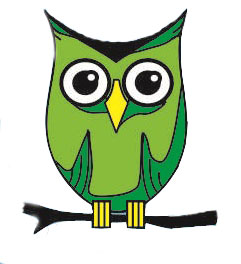Effectiveness of Adas Leaf Infusion (Foeniculum vulgare L.) in post-best White Rats (Rattus Sp.) on the growth of children
Abstract
Keywords
Full Text:
PDFReferences
References
Kharisma, Y., Ariyoga, A. & Sastramihardja, H. S. Efek Ekstrak Air Buah Pepaya (Carica papaya L.) Muda terhadap Gambaran Histologi Kelenjar Mamma Mencit Laktasi. Majalah Kedokteran Bandung 43, 160-165 (2011). https://doi.org:10.15395/mkb.v43n4.63
Angelsen, N. K., Vik, T., Jacobsen, G. & Bakketeig, L. S. Breast feeding and cognitive development at age 1 and 5 years. Arch Dis Child 85, 183-188 (2001). https://doi.org:10.1136/adc.85.3.183
Hasanah, M. Perkembangan Teknologi Budidaya Adas (Foeniculum vulgare Mill.). Jurnal Penelitian dan Pengembangan Pertanian 23, 139-144 (2004).
Sayed, N. Z., Deo, R. & Mukundan, U. Herbal remedies used by Warlis of Dahanu to induce lactation in nursing mothers. Indian Journal of Traditional Knowledge 6, 602-605 (2007).
Malini, T., Vanithakumari, G., Devil, N. & Fiango, V. Effect of Foeniculum vulgare Mill Seed Extract on the Genital Organ of Male and Female Rats. Indian Journal Physiology and Pharmacology 29, 21-26 (1985).
Pidada, I. Perbandingan Peningkatan Berat Badan Anak Mencit yang Diinduksi oleh Pemberian Infus Daun Pepaya dan Daun Katuk. Jurnal Berkala Penelitian Hayati 10, 49-52 (2004).
Azizah, B. & Salamah, N. Standarisasi Parameter Non Spesifik dan Perbandingan Kadar Kurkumin Ekstrak Etanol dan Ekstrak Terpurifikasi Rimpang Kunyit. Jurnal Ilmiah Kefarmasian 3, 21-30 (2013).
Van Duin, C. F. Ilmu Resep. 2 edn, 73-79 (PT. Soeroengan, 1954).
Munford, RE. Changes in the mammary gland of Rats and Mice During Pregnancy, Lactation and Involution. Journal Endocrinology 28, 17-34 (1963).
Mephan, T.B. Physiology of Lactation, 1160 (Open University Press, 1987).
Kadarwati. Pengaruh akar ginseng (Wild ginseng) dalam ransum mencit (Mus musculus) terhadap jumlah anak dan pertumbuhan anak dari lahir sampai dengan sapih. (Institut Pertanian Bogor, 2006).
Sunaini. Pengaruh Ekstrak Ethanol Daun Adas (Foeniculum vulgare Mill.) pada Induk Tikus (Rattus norvegicus) Masa Laktasi terhadap Pertumbuhan Anak. (UIN Sunan Kalijaga, 2016).
Winarno. Kimia Pangan dan Gizi. (PT. Gramedia Pustaka Utama, 2002).
Marwah, M., Suranindyah, Y., & Trijoko, W. Produksi dan komposisi susu kambing peranakan ettawa yang diberi suplemen daun katuk (Sauropus androgynus (L.) Merr) pada awal masa laktasi. Buletin Peternakan 14, 94-102 (2010).
Jefferson, W., Padilla-Banks, E., Clark G., & Newbold R. Assessing estrogenic activity of phytochemicals using transcriptional activation and immature mouse uterotrophic responses. Journal of Chromatography: Analytical Technologies in the Biomedical and Life Sciences 777, 179-189 (2002).
Sa’roni, Tonny, S., Mochmmad, S., & Zulaela. Efectiveness of the Sauropus androgynus L. Merr leaf extract in increasing mother’s breast milk production. Jurnal Penelitian dan Pengembangan Kesehatan 14, 20-24 (2004).
Setyaningtijas, AS., et al. Kinerja reproduksi tikus bunting akibat pemberian ekstrak etanol Purwoceng (Pimpinella alpina). Jurnal Kedokteran Hewan 8, 1-3 (2014).
Tsourounis C. Clinical Effects of Phytoestrogens. Journal of Clinical Obstetrics and Gynecology 44, 836-842 (2004).
Couse, J., Lindzey, J., Grandien, K., Gustafsson, J., & Korach, K. Tissue distribution and quantitative analysis of estrogen receptor-alpha (ERα) and estrogen receptor-beta (ERß) messenger ribonucleic acid in the wild-type and eralpha knockout mouse. Journal Endocrinology 138, 4613–4621 (1997).
Hayatin, D. konsumsi pakan dan pertambahan bobot badan harian tikus (Rattus norvegicus) bunting akibat penyuntikan BSt (bovine somatotropin). (Institut Pertanian Bogor, 2007).
Ganong, W. Review of Medical Physiology (Terjemahan Widjajakusuma H.M Djauhari). Edsisi 10, 411-468 (Buku Kedokteran EGC, 2003).
Rifqiyati, N. Kandungan gizi dan senyawa fitokimia daun Adas (Foeniculum vulgare Mill.). Prosiding Seminar Nasional Biodiversitas 5, 104 (2016).
Bionaz, M., Hurley, M., & Loor, J. Milk protein synthesis in the lactating mammary gland: Insights from transcriptomics analyses. in Milk protein (IntechOpen, 2012).
Edozien, Khon MAR, & Waslien. Human protein deficiency: Result of a Nigerian village study. Journal of Nutrition 104, 312- 328 (1975).
Mahan, DC. Effect of feeding various gestation and lactation dietary protein sequence on long-term reproductive performance in Swine. Journal of Animal Science 45, 1060-1072 (1977).
Widiyati, S. Pengaruh pemberian ekstrak daun turi (Sesbania grandiflora L.) terhadap jumlah sekresi air susu dan diameter alveolus kelenjar ambing mencit (Mus musculus). (UIN Maulana Malik Ibrahim, 2009).
Bustamam, N. Fitoestrogen dan kesehatan tulang. Jurnal Penelitian Bina Widya 19, 146-150 (2008).
Nuhuyanan, A. Peran infusa buah adas (Foeniculum vulgare Mill.) terhadap kinerja reproduksi tikus betina umur 1 tahun. (Institut Pertanian Bogor, 2014).
Rahayu, S., Widiyani, T., & Sutarno. Pertumbuhan dan perkembangan embrio tikus putih (Rattus norvegicus L.) setelah perlakuan kebisingan. Jurnal Biologi Smart 7, 53-59 (2005).
Roughead, & Kunke, M. Effect of diet on bone matrix constituents. Journal American Collage of Nutrition 10, 242–248 (1991).
Cornwell, T., Cohick W, & Raskin I. Dietary phytoestrogens and health. Phytochemistry 65, 995-1016 (2004). https://doi.org/10.1016/j.phytochem.2004.03.005
Djuwita, I., Pratiwi A., Winarto A, & Sabri M. Proliferasi dan diferensiasi sel tulang tikus dalam medium kultur in vitro yang mengandung ekstrak batang Cissus quadrangula Salisb. (sipatah-patah). Jurnal Kedokteran Hewan 6, 75-80 (2012).
Rahmawati, S. Efektifitas ekstrak kulit batang, akar, dan daun Sirsak (Annona muricata) terhadap kadar glukosa darah. (Universitas Islam Negeri Sunan Kalijaga, 2013).
Pramono, S. Efek Antiinflamasi Beberapa Tumbuhan Umbelliferae. Jurnal Berkala Penelitian Hayati 12, 7-10 (2005).
Wesam, K., et al. Therapeutic and pharmacological potential of Foeniculum vulgare Mill: A review. Journal of Herbal Medical Pharmacology 4, 1-9 (2015).
Gardner, F.P., Pearce R.B., & Mitchell, R. 1991. Fisiologi Tanaman Budidaya (Terjemahan Herawati Susilo). (Universitas Indonesia, 1991).
Weiping, He & Baokang, H. A review of chemistry and bioactivities or a medicinal spice: Foeniculum vulgare. Journal of Medicinal Plants Research 5, 3595-3600 (2011).
DOI: https://doi.org/10.26555/symbion.11672
Refbacks
- There are currently no refbacks.
Copyright (c) 2023 Dwi Yovi Yana

This work is licensed under a Creative Commons Attribution-ShareAlike 4.0 International License.

Symbion organized by
Deparment of Biology Education
Faculty of Teacher Training and Education
Universitas Ahmad Dahlan, Yogyakarta
Campus 4 UAD Jl. Ringroad Selatan, Kragilan, Tamanan, Banguntapan, Bantul,
Special Region of Yogyakarta, 55191